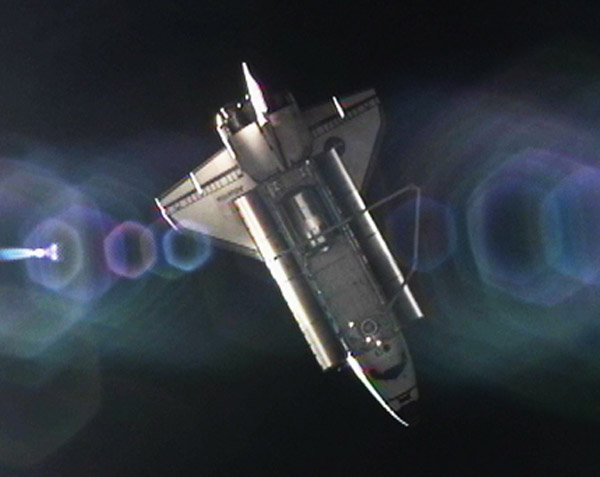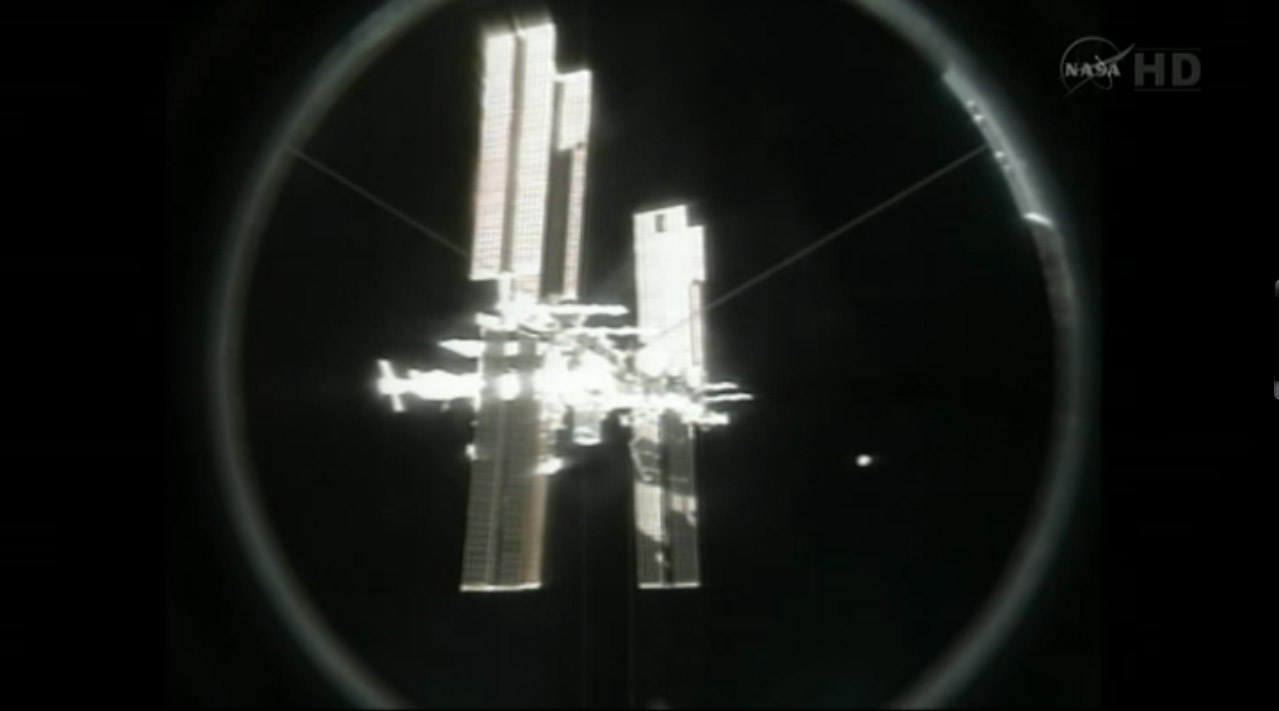Last Shuttle Astronauts Bid Historic Farewell to Space Station


This story was updated at 4:25 a.m. EDT.
HOUSTON — NASA's last space shuttle ever to visit the International Space Station cast off from the orbiting lab early Tuesday (July 19) to begin one final trip back to Earth.
Atlantis launched July 8 on the 135th and last voyage of NASA's 30-year space shuttle program. The orbiter delivered four astronauts and a horde of spare parts for the space laboratory, and is now packed full of trash to take back to Earth.
The astronauts closed the hatches between the shuttle and the station Monday (July 18) and undocked and departed from the outpost Tuesday at 2:28 a.m. EDT (0628 GMT).
"Atlantis departing for the last time," station astronaut said while ringing a bell as the orbiter backed away. "Thank you for your 12 docked missions to the International Space Station. We'll miss you guys. Godspeed, soft landing." [Photos: NASA's Last Shuttle Mission in Pictures]
Collectively, NASA's space shuttles spent about 40 weeks over 37 missions docked to the International Space Station helping to assemble the football-field sized laboratory.
"The International Space Station now enters the era of utilization," Atlantis commander Chris Ferguson said. "Like a proud parent, we anticipate great things to follow from the men and women who build, operate, and live there. From this unique vantage point, we can see a great thing has been accomplished. Farewell ISS, make us proud."
Breaking space news, the latest updates on rocket launches, skywatching events and more!
On this mission, Atlantis spent 8 days, 15 hours and 21 minutes docked to the outpost.
Ferguson plans to land the spacecraft Thursday (July 21) for one last time at NASA's Kennedy Space Center in Florida.
Working the night shift
Ferguson and his crew began their 12th day in space Monday just after 10 p.m. EDT (0200 GMT Tuesday), waking to the song "Don't Panic" by Coldplay, played especially for pilot Doug Hurley.
"Good morning Houston, I'd like to thank my wife Karen and my son Jack for the great song — they know I really like it," Hurley said. "We are getting ready for undock today. We get to do one last lap of Atlantis around ISS and start our trip home." [Astronaut Rock: NASA's Final Space Shuttle Wakeup Songs]
Following undocking, astronauts aboard the space station rotated their vehicle about 90 degrees to allow the shuttle astronauts to take detailed photos of the outpost from many angles to document the status of its exterior. The maneuver offered some unique views of the space station, NASA officials said.
"Station, Atlantis, you'll be happy to know you look just as good from the side as you do from the front," Fergusion radioed the station crew.
Following the rotation, Hurley steered Atlantis on a half lap around the space station.
"We see you from Sergei's bedroom window," station astronaut Ron Garan said, referring to station crewmember Sergei Volkov of Russia. "You guys look good from here."
Final separation
After the flyaround, Atlantis made a final separation burn to depart from the station at 4:18 a.m. EDT (0818 GMT).
"It's been an incredible ride," Ferguson radioed NASA astronaut Dan Tani and the room of flight controllers working at NASA's Mission Control room in Houston. "On behalf of the four of us, we're really appreciative that we had the opportunity to work with you. We're glad to be headed home and we're happy to have served with you."
The shuttle's crewmembers will spend the rest of their day performing one final inspection of the orbiter's heat shield to ensure the sensitive tiles are intact and ready to protect the vehicle during re-entry through Earth's atmosphere.
"The undocking day will be a very busy day; we have a great deal of activities to do," shuttle flight director Kwatsi Alibaruho told reporters during a Monday briefing.
Intense emotions
The voyage is the end not just for the space shuttles, but for the thousands of NASA shuttle workers who will soon be taking on non-shuttle related jobs within the agency or moving on entirely.
"After my shift tomorrow, we'll commend the crew and the mission to the care of the entry team," Alibaruho said. "The emotions feel a bit more intense today than they felt back on flight day two or flight day three." [9 Weird Things NASA Flew on Space Shuttles]
Alibaruho and his on-orbit flight control team will hand over mission control duties to Tony Ceccacci, lead shuttle re-entry flight director, and his team.
"Personally, I feel a great sense of honor and pride at being able to serve as a shuttle flight director," Alibaruho said. "It's been an extraordinary program. I feel intense gratitude and I'm very humbled by it. My team have been absolutely fantastic, I couldn't be more proud of them."
Museum bound
So far, the weather looks good for a Thursday landing in Florida, NASA officials said.
"Preliminary indications are that it should be favorable," Alibaruho said. "As we know from launch day, you never know what's going to happen until you show up on game day."
After Atlantis lands, the vehicle and its siblings Discovery and Endeavour will be readied to go on display in museums. Atlantis is promised to the Kennedy Space Center's Visitors Center, while Discovery will go to the Smithsonian's National Air and Space Museum near Washington, D.C., and Endeavour will be placed at the California Science Center in Los Angeles.
In the absence of the shuttles, NASA will rely on Russian spacecraft to carry U.S. astronauts to the International Space Station, until private American spacecraft are ready to take over the job. Meanwhile, NASA will begin building a heavy-lift rocket and crew capsule to carry astronauts beyond low-Earth orbit, ultimately to Mars.
You can follow SPACE.com Senior Writer Clara Moskowitz on Twitter @ClaraMoskowitz. Visit SPACE.com for complete coverage of Atlantis' final mission STS-135 or follow us @Spacedotcom and on Facebook.

Clara Moskowitz is a science and space writer who joined the Space.com team in 2008 and served as Assistant Managing Editor from 2011 to 2013. Clara has a bachelor's degree in astronomy and physics from Wesleyan University, and a graduate certificate in science writing from the University of California, Santa Cruz. She covers everything from astronomy to human spaceflight and once aced a NASTAR suborbital spaceflight training program for space missions. Clara is currently Associate Editor of Scientific American. To see her latest project is, follow Clara on Twitter.

